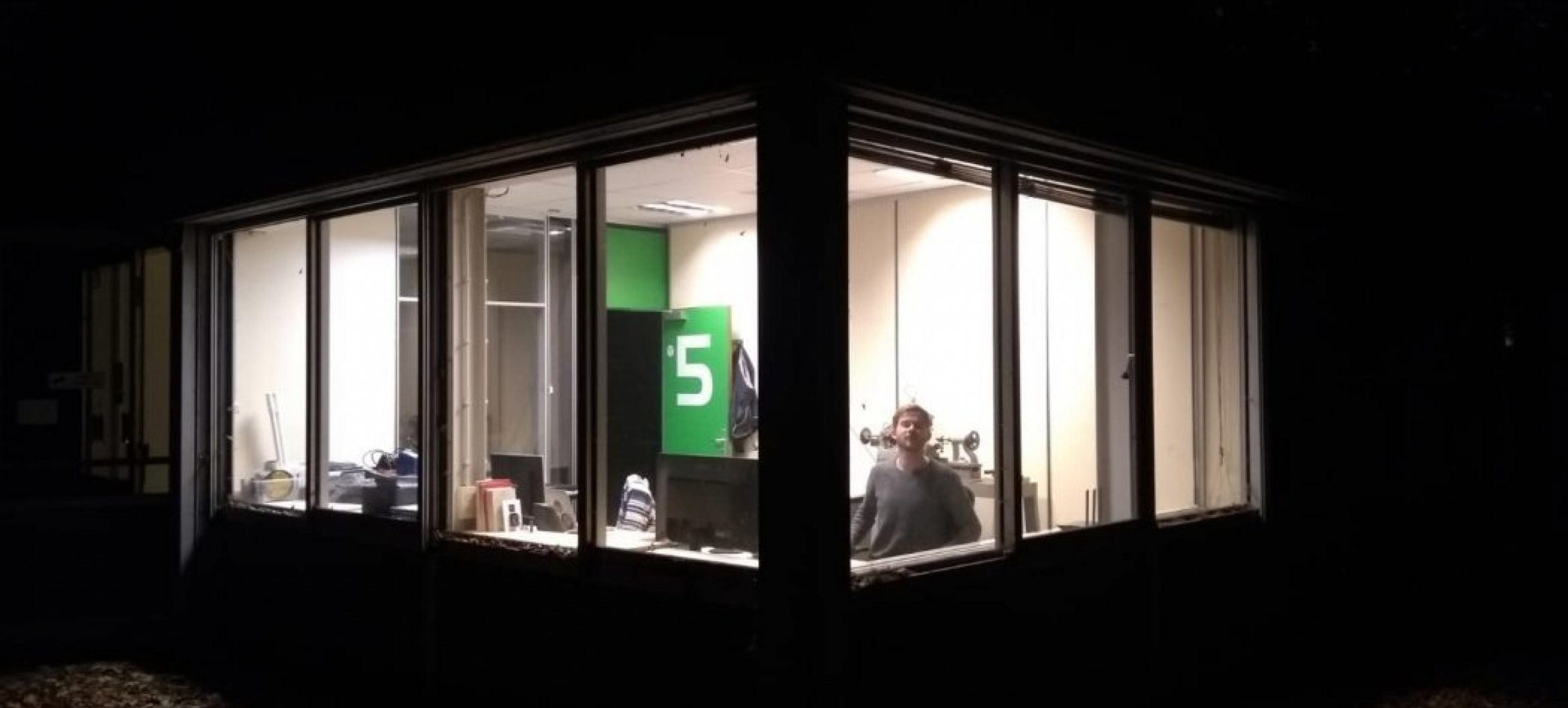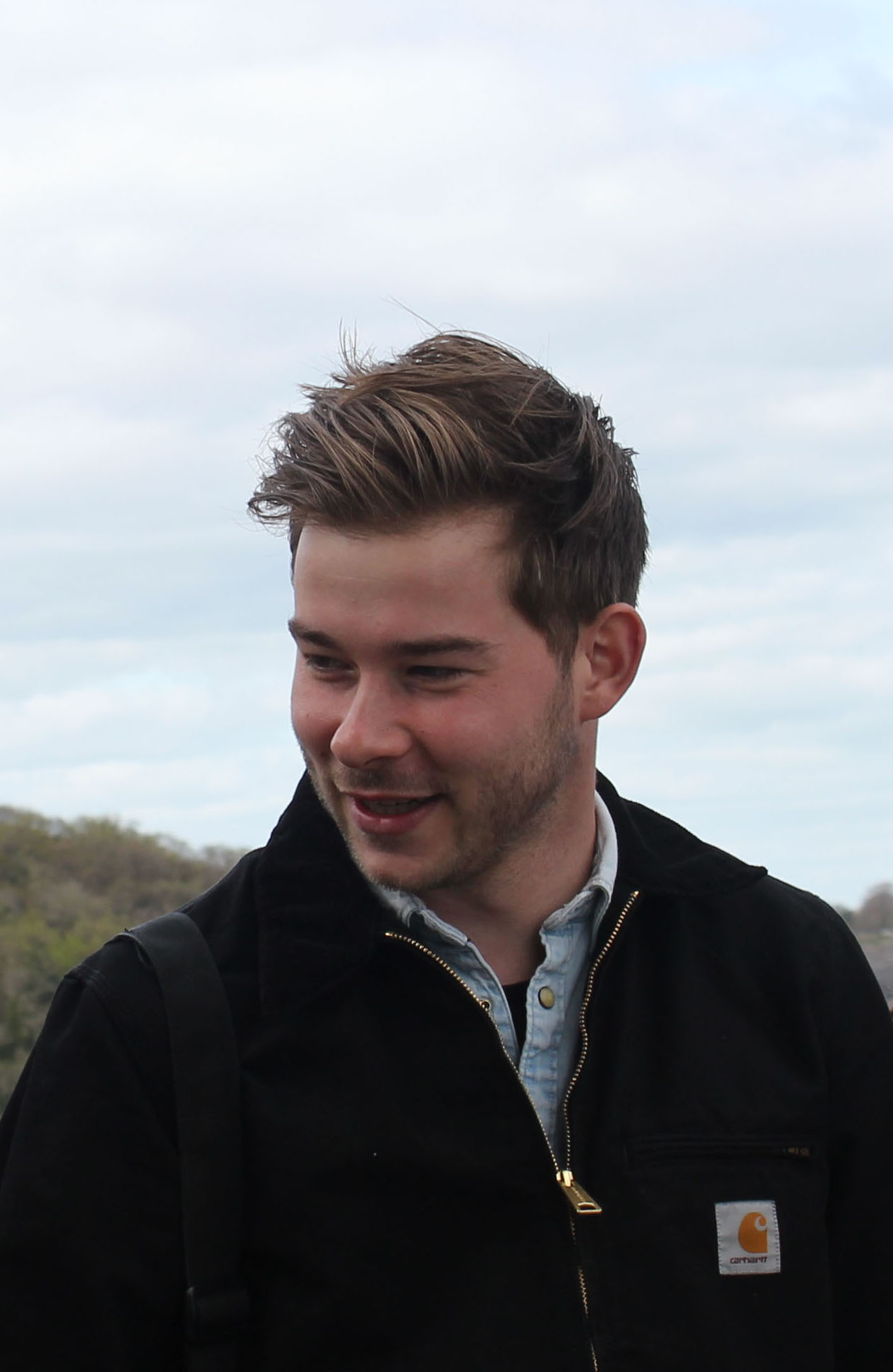Thomas van den Bliek, 3/5, home blogger ArtEZ Business Centre
Product Design

Step by step
"Time flies when you’re having fun’’, as they sometimes say. Whether it’s always been ‘fun’ is doubtful, but time definitely flew by. It’s been a year since I graduated from ArtEZ. Since it was an interim graduation, I got my diploma in January. The advantage of that is I didn’t have a summer holiday right after, so I could keep working without interruption. A downside is that my graduation project was exhibited later, during the ArtEZ Finals in July.
Right after finishing my time at the Academy I was able to join Studio met met (www.studiometmet.com) by Lennart Bras and Casper Notenboom. They both graduated in 2016 from the product design program. Together they run their studio specialized in product, interior, accessory and footwear design. Maybe you’ve seen them drive through town in the old Fiat Panda they use as their company car, transporting to location some wooden sheets tied to the roof. To the St. Walburgis Church in Arnhem, for example, where we worked on the interior design of Museum Arnhem. That job meant I had an income directly after graduation and let me skip over the proverbial ‘black hole’. Other than earning money, I got a close look at what it takes to run a studio and I got to participate in negotiations with clients.

It was never my intention to get started as a freelancer right away. I planned to get more experience first, working at a big studio or pursuing a Master’s degree. But in the end, more and more collaborations and commissions started to take shape. It’s difficult to say no when you’re just starting out. You want to take every commission and make the best of it, expand your network, keep busy. That process is the fastest way of learning how to be self-employed. Sometimes you learn the hard way, but most of the time I had constructive collaborations and a great time.
The next step was looking for a studio to work in. Mentally, this was important for me: I missed having a physical door to step through on my way to ‘work’. Evenings spent at home on the couch were always haunted by the spectre of work remaining to be done. Not very relaxing. Through Slak Atelierbeheer, I got access to a studio space in Arnhems Buiten starting November 2019. I share it with interaction designer Bram de Groot (www.bramdegroot.com). Bram is a creative mind, a little like Sémaphore from the Wowser [Dommel] animated cartoon. He’s a great sparring partner to explore new ideas with. We work individually in our studio but we also cooperate on a range of projects. We’re always open to new clients and collaborations. Since I got my studio space, my daily routine is much more structured and the living room is much neater. It’s a good feeling to close my front door behind me and head out to work.

Looking back, it was worthwhile spending an extra six months at the Academy. Maybe I waited too long to pick a final project topic, maybe I got too much input from my environment and maybe I was (and remain) too insecure to answer for my design proposals with absolute confidence. But choosing to stay for an extra semester gave me so much calm, and resulted in a collection of speculative products that was well-received by teachers. And more importantly: one that I’m happy with, as well.
While I spent a lot of time thinking about my role as a designer leading up to my graduation, I was able to set a clear framework for myself now. Not just where my interests lie, but also where I can excel as a freelance designer.

Do what you’re good at
Getting a commission once in a while is great. But working as a professional designer takes a little more than that. I wasn’t counting on raking in the cash with lots of commissions in my first year as a freelancer. What is important for me, though, is the sense of having built something the past year. A designer in Japan told me that you should find something you’re very good at and that you can make money with. You can alternate between that and developing your own projects and presenting new design proposals. When I graduated, I realized that the daily routine in the Academy’s workshops was a thing of the past. The first tool I invested in was a Prusa MK3, a 3D-printer, allowing me to make simple prototypes to show to clients. Now, 3D modelling has become my ‘part-time job’, which provides me with most of the income I need to finance new work and expand my portfolio.
My own projects and interests primarily lie in the realm of ‘speculative’ design: design concepts that act as suggestions for a desirable future. This gives me the opportunity to explore the implications of technological developments and develop a critical gaze on innovations. An example was the design I made for a money box as a part of my graduation collection Objects for a Cashless Society. After the presentation for Arnhemse Nieuwe, as part of the Innovate Festival in Arnhem, it became clear that several parties were interested in the concept.
That brings me to the next step. How do I turn a speculative concept for my graduation show into a real marketable product? What will the price point be, and should I outsource the production? Who should I ask about that? How many should I order? The first tip I got was to prepare a budget estimate. As I started to fill out the numbers I knew, the first version of that budget looked something like a half-solved sudoku puzzle. I was often asked whether the idea was finalized. No, it is not finalized. I would like to get in touch with people who might help me with that.

The step from ArtEZ to the world of business remains a difficult one. When you start your program at the Academy, you’re probably aware that your odds on the labor market are worse than those of graduates of other applied sciences BA programs. But that doesn’t mean that art school shouldn’t help you take that next step towards the labor market. To the contrary, I’d say it’s a completely sensible move to support art students as they acquaint themselves with a new professional environment.
The workshops of the Art Business Centre helped me to clearly define how I envision my studio. While ArtEZ prepared me well to describe my vision and role as a designer in society, turning that into a business plan is a kind of rocket science. Over the last few weeks, I’ve been working with the Art Business Centre to apply for a starter’s voucher from Gelderland Valoriseert. To finance new projects, the ability to write development plans is essential. Applying for grants, vouchers and loans is a big part of the designer’s professional life, and in my opinion could play a bigger role in our years at the Academy.
It doesn’t always have to be useful
Where I used to do lots of things simply because they were fun, now I feel like everything need to be productive. During my 10-minute bike ride to the studio, I’ll play a podcast to become smarter. A stroll in Sonsbeekpark is suddenly a way of ‘getting inspired’. Instead of simply enjoying my time outside, I feel like I need to attach a goal to it. As a freelancer, I notice that it’s hard to stop working. Of course you want to work as efficiently as possible and get as much done in a day as you can. But there is a limit, and I encountered it during my summer break. I left for France a week after my finals. I planned to chill on the beach, surf a bit, do nothing and enjoy life. But I caught myself checking my e-mail constantly. I was always carrying my phone around. I felt like I had to push forward. I was afraid everything would pass me by if I didn’t respond right away. It’s important to keep enjoying the ‘useless’ things. I think it’ll happen with time. Once in a while, I travel down to Noord-Brabant. It’s where I grew up and spent most of my childhood. My parents and childhood friends still live in the picturesque village of Vessem. It’s quiet and tranquil and the Brabantian sober-mindedness always manages to puncture the Academy bubble. When I told my friends about starting my own studio, they compared it to building a house: everything depends on a solid foundation.
Onwards to the coming year.
Translation by: Witold van Ratingen
.
Thomas van den Bliek
I’m a product designer with an interest in new technologies. My fascination for the transition from an analog to a digital world has led me to explore the byproducts that emerge with these new technologies and systems. I want to question the frictionless life that the digital era promotes and recover the human aspect through design propositions.
Follow Thomas van den Bliek
